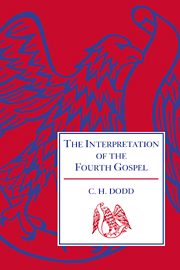A - The Proem: Prologue and Testimony
from PART III - ARGUMENT AND STRUCTURE
Published online by Cambridge University Press: 10 December 2009
Summary
Chapter i forms a proem to the whole gospel. It falls into two parts: 1–18, commonly designated the Prologue, and 19–51, which we may, from the nature of its contents, conveniently call the Testimony.
In order to define the function of this chapter in relation to the argument which follows, we may begin with the second part of the chapter, and compare it with the opening of the Gospel according to Mark. Mark i. 1–15 constitutes similarly an introduction or proem to the gospel. It brings John the Baptist on the scene, to act as herald for the coming Messiah; then records the divine testimony to Jesus at His baptism; and then, after the temptation in the wilderness, brings Jesus to Galilee with the momentous proclamation, πεπλήρωται καιρò καìγγικεν βασιλεìατō θεō.
The section in John which I have proposed to call the Testimony covers much the same ground. It begins with the testimony of John the Baptist. And it is to be observed that while in Matthew and Luke the Baptist has much of the character of the preacher of righteousness which attaches to him in Josephus, in John as in Mark he is simply a witness to the coming of the Messiah. In the Fourth Gospel however his testimony is more detailed and definite than in Mark. In fact the testimony of the Baptist here absorbs what Mark has given as from his own pen.
- Type
- Chapter
- Information
- The Interpretation of the Fourth Gospel , pp. 292 - 296Publisher: Cambridge University PressPrint publication year: 1953
- 2
- Cited by



